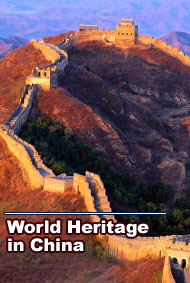
|
|
|
Regong Art
In 2009, Regong arts was inscribed on the Representative List of the Intangible Cultural Heritage of Humanity by the UNESCO. Description In monasteries and villages along the Longwu River basin in Qinghai Province in western China, Buddhist monks and folk artists of the Tibetan and Tu ethnicity carry on the plastic arts of painting thangka and murals, crafting patchwork barbola and sculpting known collectively as the Regong arts. Their influence extends to nearby provinces and beyond to South-East Asian countries. Thangka, the art of painting religious scrolls used to venerate Buddha, uses a special brush to apply natural dyes to cloth prepared with patterns sketched in charcoal; barbola employs plant and animal forms cut from silk fabric to create soft relief art for veils and column ornaments; and wood, clay, stone or brick Regong sculpture decorates rafters, wall panels, tea tables and cabinets in both temples and homes. The technique is mainly passed from fathers to children or from masters to apprentices strictly following ancient Buddhist painting books that provide instruction on line and figure drawing, colour matching and pattern design. Characterized by a distinctively Tibetan Buddhist religion style and unique regional features, the Regong arts embody the spiritual history and traditional culture of the region and remain an integral part of the artistic life of people there today. Criteria for inscription on the Representative List R1: Regong arts, transmitted by monks and folk artists, combine Tibetan Buddhism with local traditional culture and various artistic forms, and represent the unique identity of the region; R2: Inscription on the Representative List would contribute to demonstrating cultural diversity and human creativity, enhance a sense of cultural identity and continuity, and encourage respect and dialogue among different cultures; R3: The Regong Arts Association, established in 2001, has carried out various safeguarding activities together with local and national authorities, and feasible, comprehensive and sustainable safeguarding measures are proposed with budget allocation and commitments by the concerned parties; R4: Various entities concerned with the element such as museums, associations, governmental agencies, research institutions as well as individual bearers support the nomination and participated in its preparation, identifying necessary safeguarding measures; R5: The element is inscribed on the National List of Intangible Cultural Heritage administered by the Department of Intangible Cultural Heritage of the Ministry of Culture. |